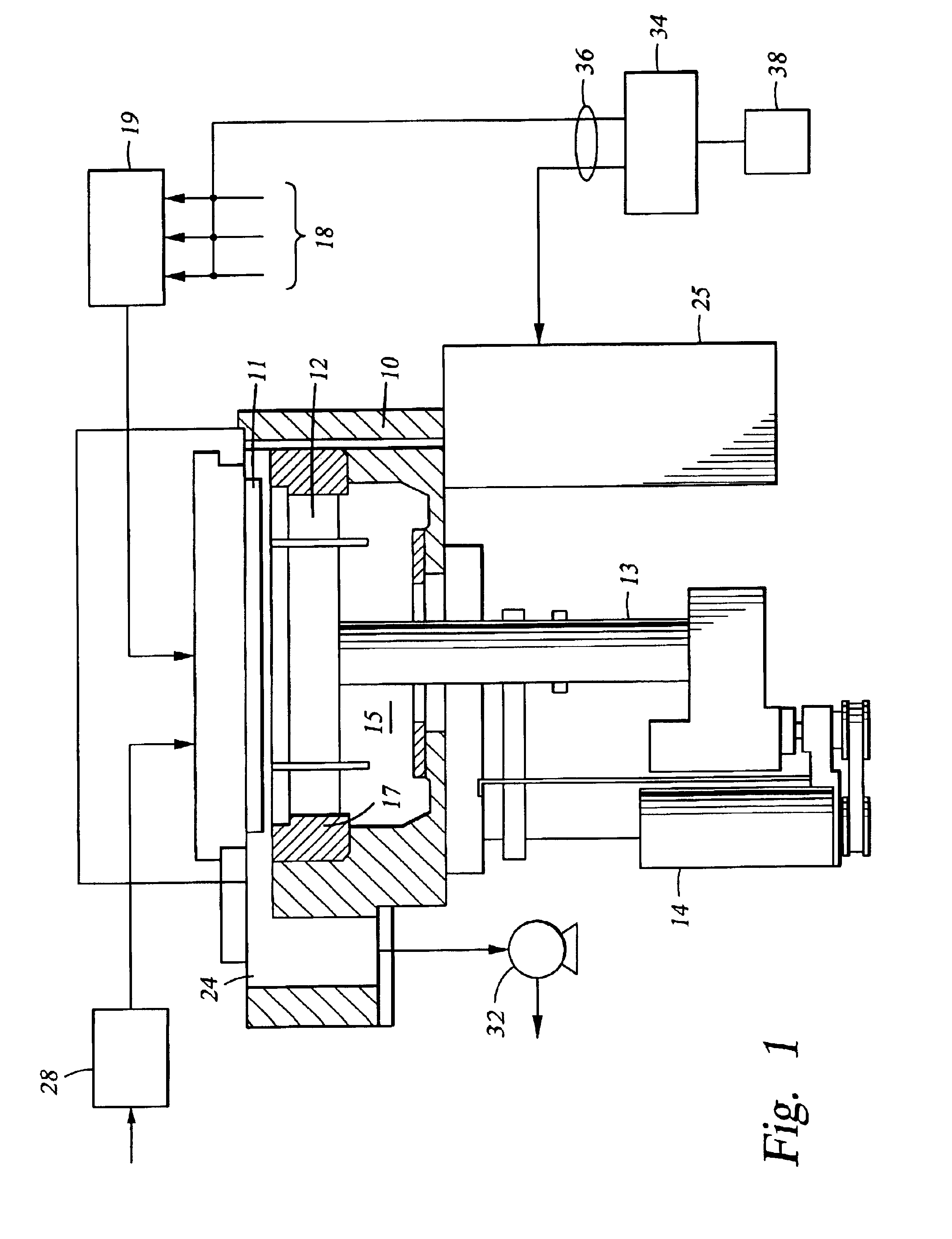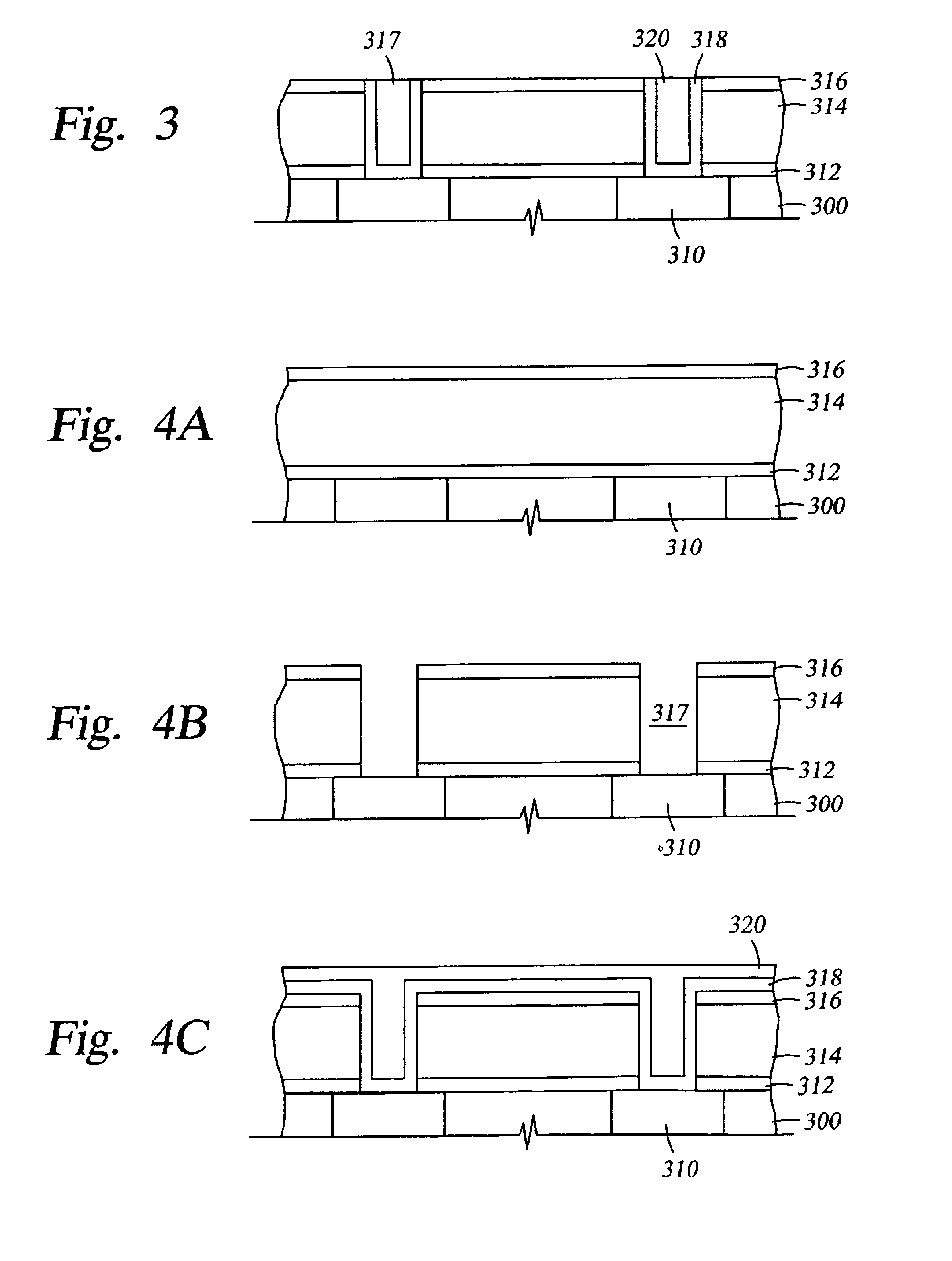Method for forming ultra low k films using electron beam
a technology of electron beam and ultra-low k, applied in the direction of electric heating, vacuum evaporation coating, coating, etc., can solve the problems of mechanical strength and failure of the integrated circui
- Summary
- Abstract
- Description
- Claims
- Application Information
AI Technical Summary
Benefits of technology
Problems solved by technology
Method used
Image
Examples
example 1
[0070]A low dielectric constant film was deposited on each of three 200 mm substrates at about 8 Torr and temperature of about 200° C. The following processing gases and flow rates were used:
[0071]Alpha-terpinene (ATP), at 3,000 mgm;
[0072]Diethoxymethylsilane (DEMS), at 800 mgm; and
[0073]Carbon dioxide, at 1,000 sccm.
[0074]Each substrate was positioned 300 mils from the gas distribution showerhead. A power level of 600 W at a frequency of 13.56 MHz was applied to the showerhead for plasma enhanced deposition of the films. Each film was deposited at a rate of about 2,700 Å / min, and had a dielectric constant (k) of about 5.4 measured using a SSM 5100 Hg CV measurement tool at 0.1 MHz. Each film also exhibited a hardness of about 0.1 GPa.
Thermal Anneal:
[0075]The first deposited film was subjected to a thermal anneal process. The anneal treatment utilized a temperature of about 425° C. at a pressure of about 10 Torr in an inert gas environment for about 4 hours. Shorter anneal times res...
example 2
[0078]A low dielectric constant film was deposited on each of three substrates at about 8 Torr and temperature of about 225° C. The following processing gases and flow rates were used:
[0079]Alpha-terpinene (ATP), at 3,000 mgm;
[0080]Diethoxymethylsilane (DEMS), at 800 mgm;
[0081]Carbon dioxide, at 1,500 sccm; and
[0082]Oxygen, at 100 sccm.
[0083]Each substrate was positioned 300 mils from the gas distribution showerhead. A power level of 600 W at a frequency of 13.56 MHz was applied to the showerhead for plasma enhanced deposition of the films. Each film was deposited at a rate of about 1,800 A / min, and had a dielectric constant (k) of about 2.85 measured using SSM 5100 Hg CV measurement tool at 0.1 MHz. Each film also exhibited a hardness of about 0.23 GPa.
Thermal Anneal:
[0084]The first deposited film was subjected to a thermal anneal process. The anneal treatment utilized a temperature of about 450° C. at a pressure of about 10 Torr in an inert gas environment for about 30 minutes. Sh...
example 3
[0087]A low dielectric constant film was deposited on each of two substrates at about 8 Torr and a temperature of about 225° C. The following processing gases and flow rates were used:
[0088]Alpha-terpinene (ATP), at 4,000 mgm;
[0089]Octamethylcyclotetrasiloxane (OMCTS), at 200 mgm;
[0090]Oxygen, at 200 sccm; and
[0091]Carbon dioxide 2,000 sccm.
[0092]Each substrate was positioned about 300 mils from the gas distribution showerhead. A power level of 500 W at a frequency of 13.56 MHz was applied o the showerhead for plasma enhanced deposition of the films. Each film was deposited at a rate of about 1,000 Å / min, and had a dielectric constant (k) of about 4.0 measured using a SSM 5100 Hg CV measurement tool at 0.1 MHz. Each film also exhibited a hardness of about 0.1 GPa.
E-BEAM @ 400° C. and 120 μc / cm2:
[0093]The first deposited film was subjected to a high temperature electron beam (e-beam) treatment using a dose of about 120 μc / cm2, at about 4.5 KeV and 1.5 mA, and at about 400° C. The e-b...
PUM
| Property | Measurement | Unit |
|---|---|---|
| dielectric constant | aaaaa | aaaaa |
| pressure | aaaaa | aaaaa |
| temperature | aaaaa | aaaaa |
Abstract
Description
Claims
Application Information
 Login to View More
Login to View More - R&D
- Intellectual Property
- Life Sciences
- Materials
- Tech Scout
- Unparalleled Data Quality
- Higher Quality Content
- 60% Fewer Hallucinations
Browse by: Latest US Patents, China's latest patents, Technical Efficacy Thesaurus, Application Domain, Technology Topic, Popular Technical Reports.
© 2025 PatSnap. All rights reserved.Legal|Privacy policy|Modern Slavery Act Transparency Statement|Sitemap|About US| Contact US: help@patsnap.com



